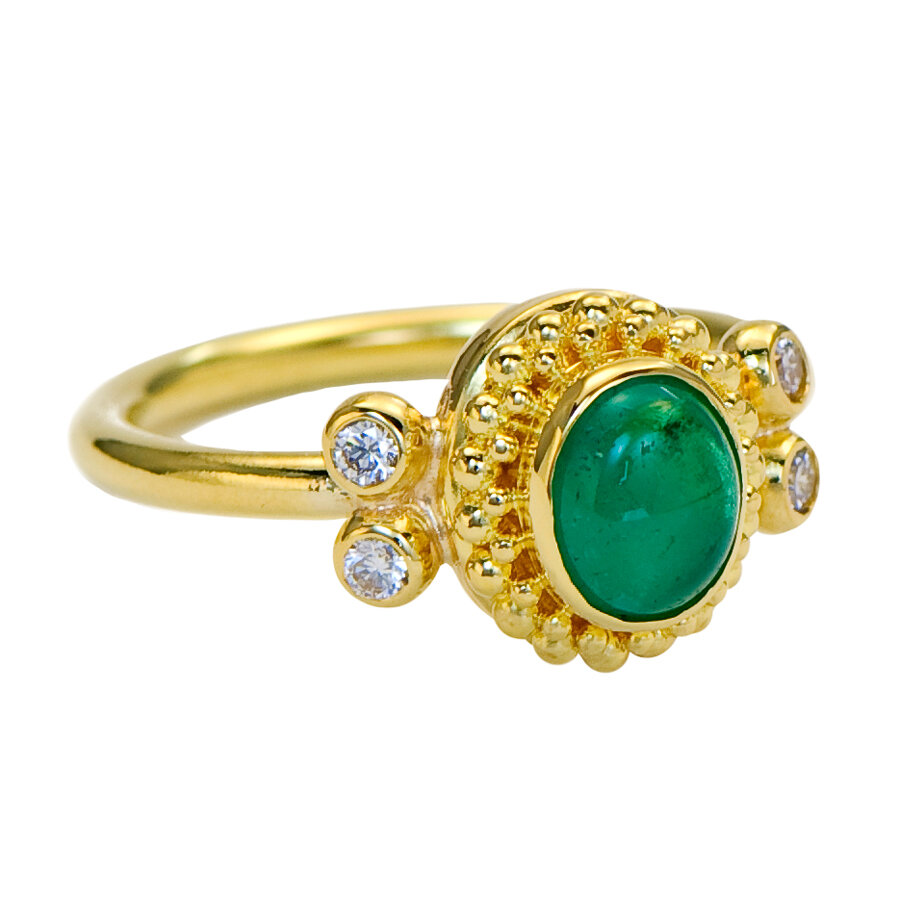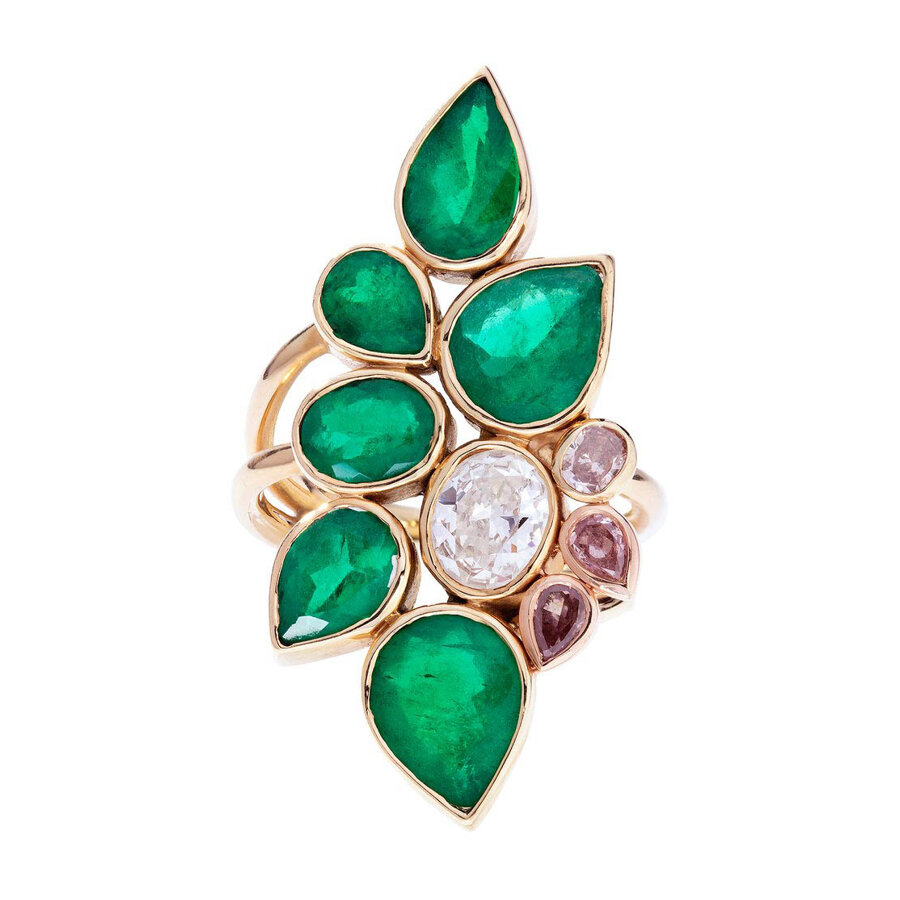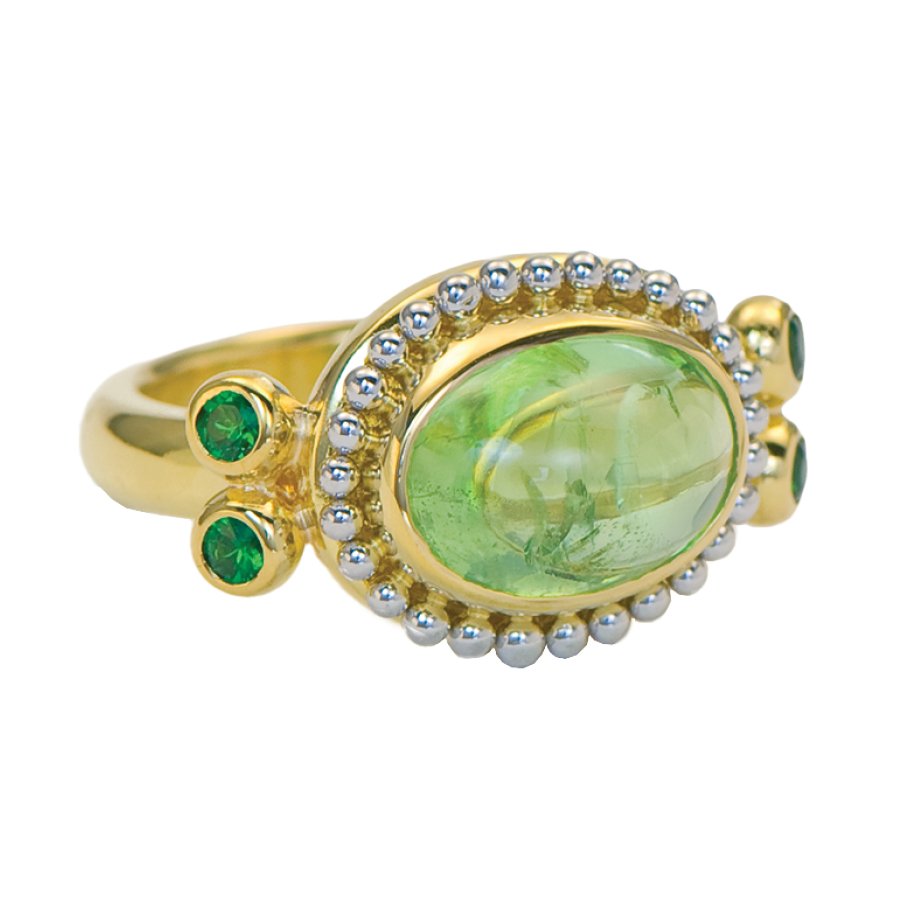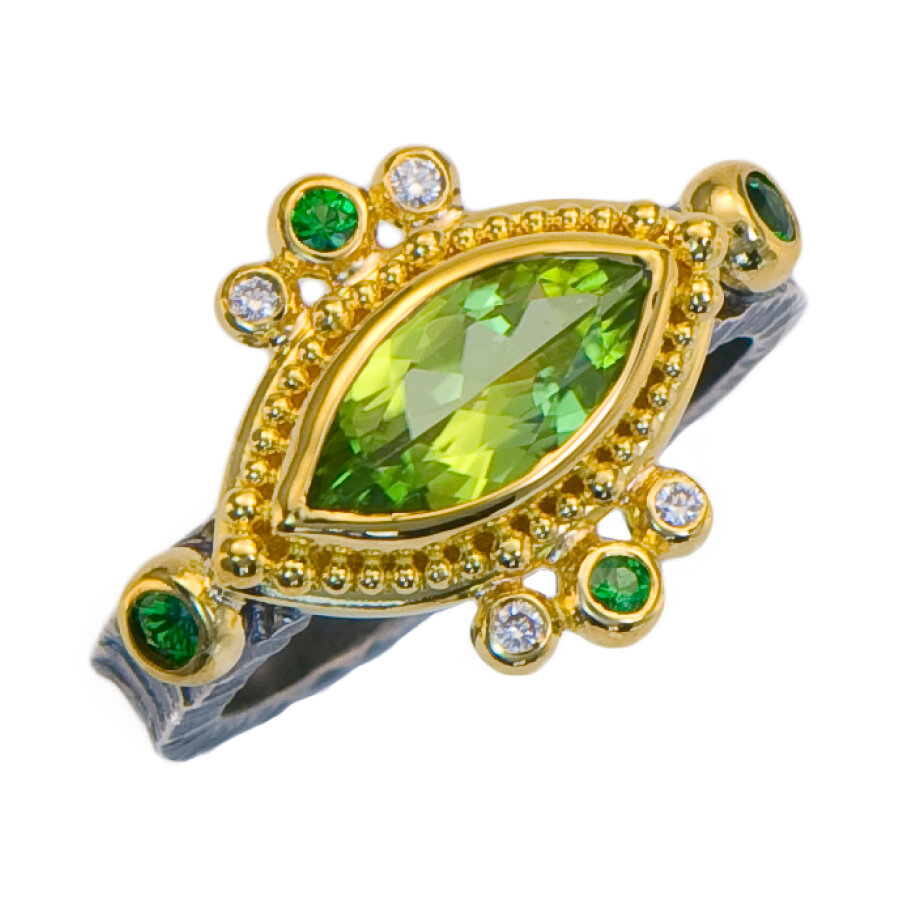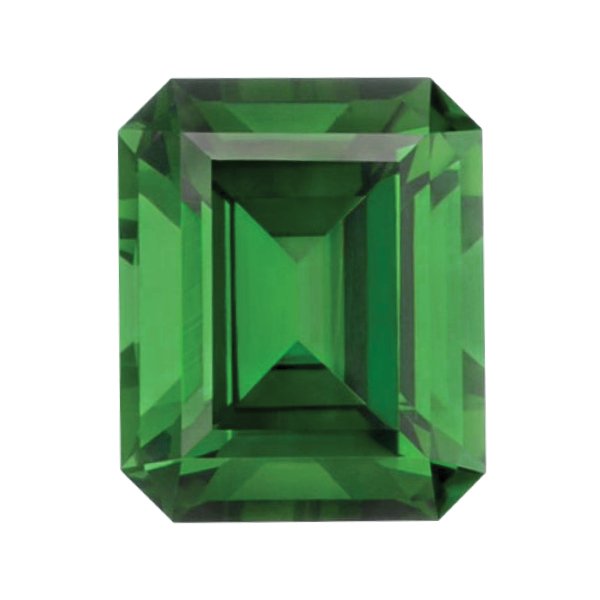SHOP emerald jewelry… and her gorgeous DOPPELGÄNGERS
EMERALD vs GARNET vs TOURMALINE
Emeralds are among the most valuable gemstones with a riveting history across ancient cultures and throughout time. Mesoamerican tribes offered them to their gods and Cleopatra famously loved emeralds.
A natural attribute of emerald is the presence of “inclusions”. Only the rarest of the rare emeralds have few inclusions. Looking into these gemstones is like a walk in Mother Nature’s “jardin” (French for garden). These perfect imperfections are what makes them uniquely beautiful... just like us as women!
She also has gorgeous doppelgängers which I will gush about shortly, but you can learn all about emeralds via: The Skinny on Emerald!
SHOP:
EMERALD JEWELRY
What is the “ideal” emerald?
In terms of what the market values most, this is classified as exhibiting rich, dark greens to bluish-greens. That said, lighter green shades can be incredibly enchanting, as are other gemstones that display similar emerald hues!
It is important to note that while emerald is on the “hard” side of the Mohs Scale at 7.5 - 8, it is a brittle crystal. Highly fractured stones, particularly on the corners, are more susceptible to damage from everyday wear and accidental bumps. Choosing kinds of jewelry (i.e. cocktail rings, necklaces, or earrings) that will encounter less contact with harder surfaces is a good option. As alluring as it is, this stone is not ideal for an engagement ring.
Meet equally gorgeous emerald-hued doppelgängers:
These emerald-hued stunners are garnet, tourmaline, and even sapphire! All of these gemstones can exhibit similar hues - and can be more durable, attainable options that are equally alluring.
SHOP:
EMERALD LOOK ALIKES
Find things to know about each of these gemstones via:
WHAT DOES RESPONSIBLY SOURCED JEWELRY MEAN?
The jewelry you discover here is discerning because of the unique design signature and the careful consideration of the materials selected.
Just like we know where our food is from and who made our clothes, why not jewelry?
Responsible sourcing goes beyond ethically or sustainably sourced. This encompasses conflict-free, traceability, protecting people, their skills, and the environment be it land or sea. This is an open, evolving conversation worth having, as we all seek to make choices that align with our values.
As much as possible, the designers in this community do their best to choose jewelry “ingredients” that honor this.
Gemstones can be responsibly sourced or post-consumer recycled (recovered from previously worn jewelry to be reset in a new design).
For precious metals, this can mean using recycled gold - or a step further is mercury-free Fairmined gold.
An ongoing initiative worth following is the Jewelry Glossary Project.
The purpose is to create shared definitions of key terms within the jewelry industry for use by the trade and the public. The project was launched to increase transparency throughout the supply chain, by building consensus on definitions for key terms and creating accountability for their usage.



